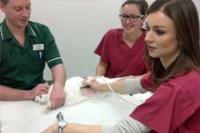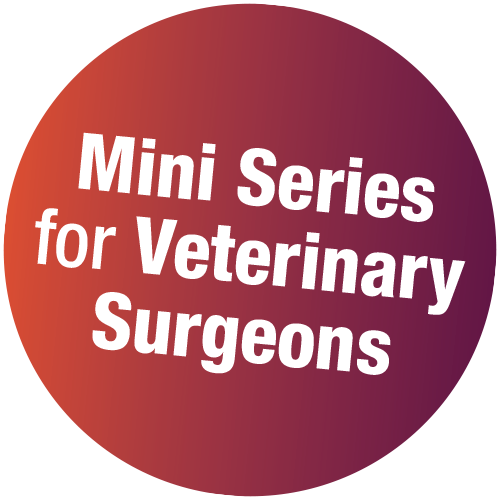MS130 – Feline Ultrasound Mini Series
£447.00 (+VAT)
12 months access to recordings and course materials is included. Please note that these are webinar recordings and not live events. Full details on how to access the Mini Series will be emailed to you.
- Join Sally Birch and Domingo Casamian Sorrosal for three 2-hour online sessions and get to grips with abdominal and cardiac ultrasonography in your feline patients
- Comprehensive notes to downloaded
- Self-assessment quizzes to ‘release’ your 8 hours CPD certification (don’t worry, you can take them more than once if you don’t quite hit the mark first time)
- A whole year’s access to recorded sessions for reviewing key points
- Superb value for money – learn without travelling
- Watch the recordings on your iPad!
Programme
Abdominal Ultrasound 1
Part 1:‘Getting Started’ – The Ultrasound Machine
Part 2: The Liver, Spleen and Peritoneal Cavity
Sally Birch BVSc(Hons) CertAVP DipECVDI MRCVS
During Session 1 of this Mini Series we will cover how to get the most out of both your ultrasound machine and your patient and how to assess the normal peritoneal cavity, liver and spleen. You will also learn how to recognise peritoneal effusions, free gas and common diseases of the hepatobiliary system.
What you’ll learn:
- Help! What do all the knobs on my ultrasound machine do?
- Basic ultrasound physics explained simply
- Tips for good patient preparation
- Learn how to systematically evaluate the entire liver
- Evaluate the biliary tree with confidence
- How do I assess the spleen?
- Top tips for recognising free peritoneal gas
- Learn how different types of effusion vary in their appearance on ultrasound
Abdominal Ultrasound 2
Part 1: The Urinary Tract, Medial Iliac Lymph Nodes and Adrenal Glands
Part 2: The Pancreas and Gastrointestinal Tract
Sally Birch BVSc(Hons) CertAVP DipECVDI MRCVS
During Session 2 we’ll explore conditions of the urinary tract, learn how to find the adrenal glands and pancreas and review the normal appearance and common conditions affecting the gastrointestinal tract. Throughout both Sessions 1 and 2 we’ll look at commonly encountered artefacts, learn how to use them to our advantage and recap what structures can be sampled under ultrasound guidance and how best to do so.
What you’ll learn:
- How do I find those all-important adrenal glands?
- An introduction to urolithiasis, hydroureter and hydronephrosis…
- What does chronic renal disease look like?
- What are perinephric pseudocysts anyway?
- Where are the medial iliac lymph nodes and why are they so important?
- How to locate and recognise the normal pancreas
- How do I know if this cat has pancreatitis?
- Become familiar with normal gastrointestinal wall layering
- Differentiate between the duodenum, jejunum and ileum
- Recognise the ileocecocolic junction and colon with confidence
- Jejunal lymph nodes: where are they and what should they look like?
- Linear foreign bodies, intussusception and neoplasia – what you need to know
Echocardiography
Part 1: Echocardiography in the Cat: Right Parasternal Views
Part 2: The Pleural Space, the Pericardium and the Lung
Domingo Casamian Sorrosal DVM CertSAM DipECVIM-CA DVC MRCVS
During Session 3 you will learn how to obtain basic echocardiographic images with tips on how to successfully identify left atrial enlargement and left ventricular thickening. The session will also cover conditions of the pericardial and pleural spaces and an initial approach to lung ultrasonography.
What you’ll learn:
- How to take good echocardiographic views – position and cardiac “knobology”
- Long axis and short axis views
- How to successfully identify left atrial enlargement
- How to successfully identify left ventricular thickening
- Pericardial disease in the cat
- How to use the ultrasound for evaluation of the pleural space
- Top tips for basic lung ultrasonography
The price includes all 3 sessions, notes and quiz – 8 hours of CPD
*No traffic jams, accommodation hassles, pet or childcare, rota clashes, locum fees ……….. just great CPD and a valuable ongoing resource.
Course Feedback :
“I will definitely be doing some more of these courses!”
“Good tutor, good overview of feline ultrasound!”
“Useful features specific to cats and the differential diagnoses in context. Also good illustration of the anatomy and landmarks.”



